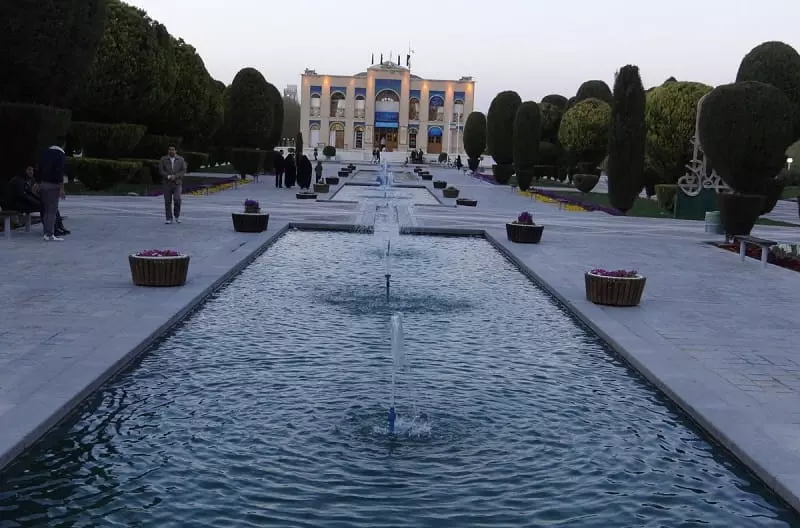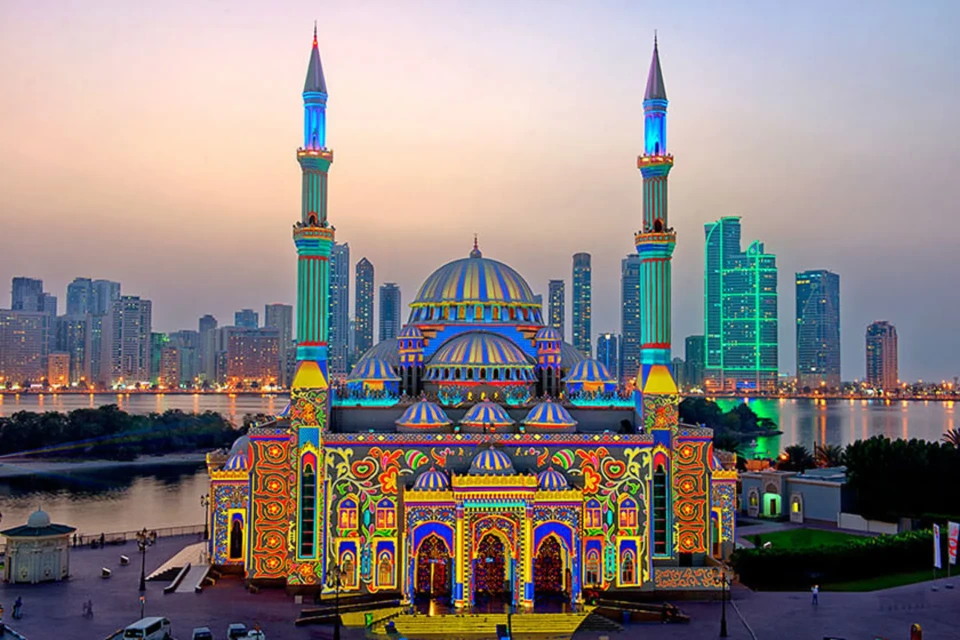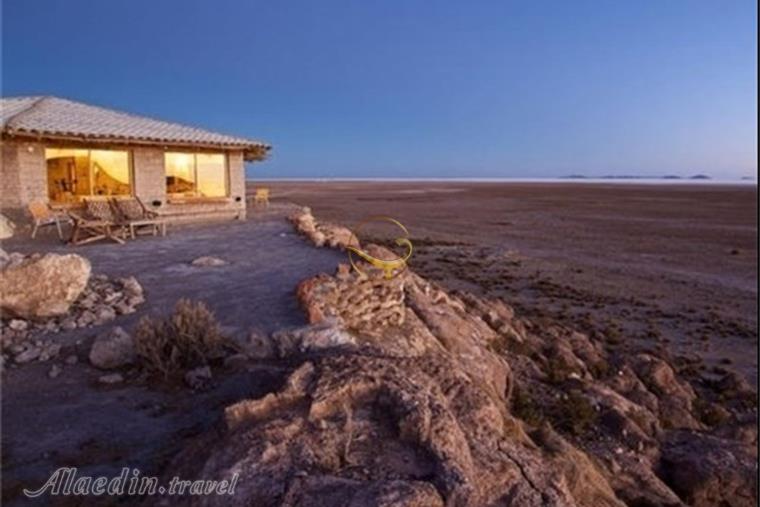THE 15 BEST Things to Do in Shiraz
Shiraz, a city in Iran, is known for its rich history, culture, and stunning landmarks. Here are some of the top things to do in Shiraz:
1.Visit Persepolis
Explore the ancient ruins of Persepolis, the ceremonial capital of the Achaemenid Empire, which is a UNESCO World Heritage Site.
Persepolis is an ancient city located near Shiraz, Iran, and is one of the most significant archaeological sites in the country. Here are some key details about visiting Persepolis:
Historical Significance: Persepolis was the ceremonial capital of the Achaemenid Empire and was founded by King Darius the Great in 518 BC. It served as a center for governance and celebrations, including the famous New Year’s festival, Nowruz.
Architectural Marvel: The site boasts impressive ruins and structures showcasing the grandeur and sophistication of Achaemenid architecture. The monumental staircases, imposing gateways, intricately carved reliefs, and palaces reflect the empire’s cultural and artistic achievements.
Key Structures: Some of the notable structures within Persepolis include the Apadana Palace, the Throne Hall, the Gate of All Nations, the Tachara (Winter Palace), the Hundred-Column Hall, and various other buildings and platforms.
Intricate Carvings: Visitors can admire the detailed carvings on the walls and columns, depicting scenes of tribute-bearing representatives from various nations under Persian rule, religious rituals, royal processions, and mythical figures.
UNESCO World Heritage Site: Persepolis was inscribed on the UNESCO World Heritage List in 1979 due to its historical and cultural significance.
Visiting Tips: It’s recommended to wear comfortable shoes as there might be some walking involved. Visitors might benefit from a guide or guidebook to understand the historical context and significance of the ruins. Also, there are usually local guides available on-site. The best times to visit are in the early morning or late afternoon to avoid the midday heat.
Accessibility: The site is easily reachable from Shiraz by car, taking about an hour’s drive. Local taxis or guided tours are common modes of transportation for visitors.
Persepolis stands as a testament to the ancient Persian civilization’s grandeur and is a must-visit for history enthusiasts, archaeology lovers, and anyone interested in exploring the rich history of Iran.
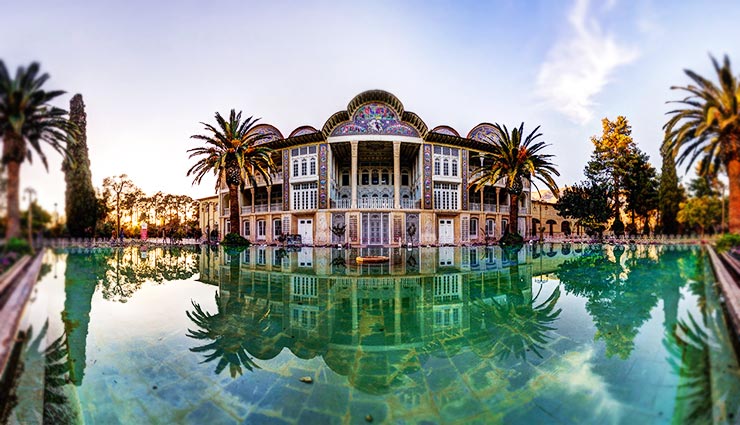
2.Nasir al-Mulk Mosque (Pink Mosque)
Admire the exquisite architecture and colorful stained glass windows that create a mesmerizing play of light inside the mosque.
The Nasir al-Mulk Mosque, often referred to as the “Pink Mosque,” is a stunning architectural gem located in Shiraz, Iran. Here are more details about this remarkable mosque:
Architectural Beauty: Completed in 1888, the Nasir al-Mulk Mosque is celebrated for its exquisite architecture, particularly its interior design. What sets it apart is the extensive use of colorful stained glass windows, intricate tile work, and delicate Persian carpets that create a mesmerizing play of light and colors within the prayer hall.
Stained Glass Windows: The highlight of the mosque is the early morning hours when sunlight streams through the stained glass windows, casting an array of vibrant colors onto the floor, walls, and ceiling. The interplay of light creates a breathtaking kaleidoscope effect, painting the interior with hues of blue, pink, yellow, and green.
Design Elements: The mosque’s architecture features traditional Islamic design elements, including delicate tile work, muqarnas (stalactite vaulting), ornate calligraphy, and geometric patterns, all contributing to its beauty.
Photography Paradise: Owing to its stunning visual display, the Nasir al-Mulk Mosque has become a haven for photographers and visitors who want to witness and capture the magical interplay of light and colors.
Visiting Tips: To experience the full effect of the light show, it’s recommended to visit the mosque early in the morning around sunrise. The best time to witness the colorful display is usually between 8 AM and 10 AM. However, it’s also a popular tourist spot, so there might be crowds, especially during peak travel seasons.
Respectful Attire: As with any religious site, visitors are expected to dress modestly when entering the mosque. This means wearing clothing that covers arms, legs, and hair for women. Scarves might be available for borrowing at the entrance if needed.
The Nasir al-Mulk Mosque stands as a testament to Persian architecture’s elegance and beauty, offering visitors an unforgettable and visually captivating experience. Its unique display of colors and intricate design make it a must-visit destination for those exploring Shiraz and its cultural landmarks.
3.Eram Garden (Bagh-e Eram)
Wander through the beautifully landscaped Persian garden, known for its cypress trees, flowers, and a historic Qavam House.
Eram Garden, known as “Bagh-e Eram” in Persian, is a historic Persian garden located in Shiraz, Iran. This UNESCO World Heritage Site holds cultural, historical, and aesthetic significance. Here are more details about Eram Garden:
Historical Background: Eram Garden dates back to the 18th century, belonging to the Qajar era, though some elements of the garden might have earlier origins. It was once owned by the local aristocracy and later became property of the royal family. The garden was donated to Shiraz University in the 1960s and is now used as a botanical garden and research center.
Persian Garden Design: Eram Garden exemplifies the traditional Persian garden layout, following the charbagh (fourfold garden) design, which typically features symmetrical quadrants divided by water channels and pathways. It showcases a harmonious blend of natural elements, including flowing water, trees, flower beds, and pavilions.
Flora: The garden is adorned with a variety of plant species, including towering cypress trees, fruit trees, colorful flowers, and aromatic shrubs. The diverse plant life adds to the garden’s aesthetic appeal and serves as an outdoor botanical collection.
Qavam House: One of the central attractions within Eram Garden is the Qavam House, a beautiful mansion that boasts stunning Qajar-era architecture. The building is adorned with exquisite tile work, intricate designs, and mirror work, making it a prime example of Persian residential architecture.
Tourist Attraction: Eram Garden draws in both tourists and locals who visit to appreciate the beauty of the garden, take leisurely strolls, relax in the tranquil surroundings, and enjoy the picturesque scenery.
Visiting Tips: The garden can get crowded during peak visiting hours, so visiting early in the morning or late afternoon might offer a more serene experience. Comfortable walking shoes are advisable for exploring the garden’s pathways.
Eram Garden is not just a beautiful tourist spot but also holds historical and cultural significance, reflecting the rich heritage of Persian garden design and serving as a serene and picturesque destination for visitors in Shiraz.
4.Tomb of Hafez
Pay respects to the revered Persian poet Hafez at his tomb, a tranquil garden setting where locals gather to read his poetry.
The Tomb of Hafez, known as “Hafezieh,” is a revered cultural and historical site located in Shiraz, Iran. It honors the famous Persian poet Khwāja Shams-ud-Dīn Muhammad Hafez Shirazi, commonly known as Hafez. Here are more details about this significant landmark:
Hafez – The Poet: Hafez, born in the 14th century, is one of the most celebrated and beloved Persian poets. His works, especially his poetry, have had a profound impact on Persian literature and continue to hold significant cultural and literary importance in Iran and beyond.
Tomb Complex: The Tomb of Hafez is a beautiful memorial complex that includes the poet’s tomb, a pavilion, gardens, and commemorative inscriptions of his poems engraved on the walls. The ambiance is tranquil, offering visitors a serene place for reflection and paying homage to the poet.
Visitors’ Customs: Locals and visitors often visit the tomb to pay their respects by reciting Hafez’s poetry, seeking guidance, or simply enjoying the peaceful atmosphere. It’s a common tradition for people to seek insight or answers to their questions by opening a page in a book of Hafez’s poetry, known as “fal-e Hafez.”
Architecture and Design: The architecture of the tomb complex reflects a blend of traditional Persian design elements. The area around the tomb features gardens with pathways, cypress trees, and fountains, providing a peaceful environment for visitors to contemplate and connect with Hafez’s literary legacy.
Cultural Significance: The Tomb of Hafez is not just a historical site but also a symbol of Persian culture, where locals and tourists gather to appreciate Hafez’s literary contributions and their relevance in contemporary life.
Visiting Tips: The site can get crowded, especially on weekends and during cultural events. It’s recommended to visit early in the morning or during weekdays to experience a quieter atmosphere.
The Tomb of Hafez serves as a significant pilgrimage site and a symbol of Persian literature, attracting visitors who seek inspiration from the poet’s timeless works and the serene ambiance of the complex.
5.Tomb of Saadi
Another important poet’s resting place, Saadi’s tomb offers a peaceful atmosphere and a chance to connect with his literary works.
The Tomb of Saadi, known as “Saadieh,” is another revered cultural and historical site in Shiraz, Iran, dedicated to the renowned Persian poet, Sheikh Muslih-uddin Saadi Shirazi, commonly known as Saadi. Here are more details about this landmark:
Saadi – The Poet: Saadi, born in the 13th century, is one of the most influential and revered Persian poets. His works, particularly his poetry and prose, are celebrated for their wisdom, moral teachings, and profound insights into human nature and society.
Tomb Complex: The Tomb of Saadi is a mausoleum complex housing the poet’s tomb, a beautiful garden, a memorial hall, and inscriptions of his poetry. The tomb’s serene setting provides a contemplative atmosphere for visitors to pay homage to the poet and reflect on his literary legacy.
Garden Setting: The tomb is surrounded by a peaceful garden with pathways, trees, and flowers, offering a tranquil space for visitors to stroll, relax, and connect with the natural beauty of the surroundings.
Cultural Significance: Similar to the Tomb of Hafez, the Tomb of Saadi holds cultural and spiritual importance. Visitors often visit the site to read Saadi’s poetry, seek inspiration, and reflect on the timeless wisdom imparted in his literary works.
Architectural Features: The architectural design of the tomb complex incorporates traditional Persian elements, providing an aesthetically pleasing environment that complements the poetic legacy of Saadi.
Visiting Tips: The tomb complex can also get busy, particularly on holidays or during special events. To enjoy a quieter visit, it’s advisable to plan the visit during less crowded times, such as early mornings or weekdays.
The Tomb of Saadi stands as a testament to the enduring legacy of Persian literature and serves as a place of reverence and inspiration for visitors, where they can immerse themselves in the timeless wisdom and literary contributions of the celebrated poet Saadi.
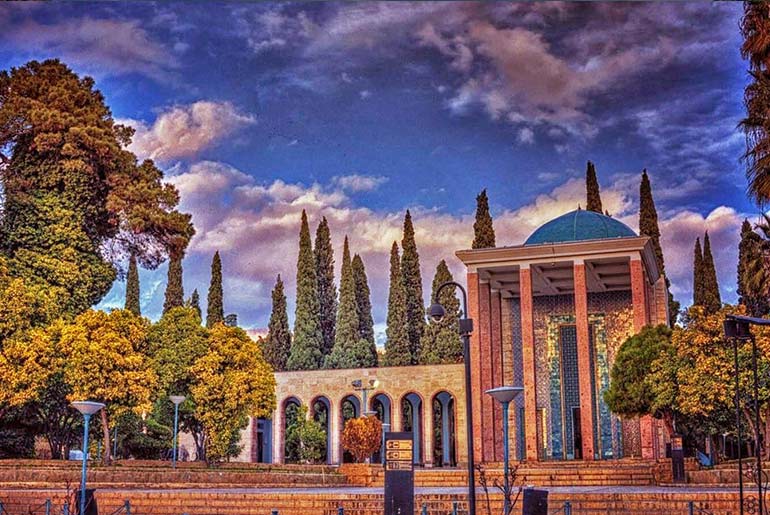
6.Vakil Bazaar
Explore the bustling traditional market where you can shop for handicrafts, spices, textiles, and immerse yourself in local culture.
The Vakil Bazaar is a historical and vibrant marketplace located in the heart of Shiraz, Iran. It stands as one of the oldest and most important bazaars in the country. Here are more details about this bustling and culturally rich marketplace:
Historical Significance: Dating back to the 11th century, the Vakil Bazaar was constructed during the Zand dynasty. It served as a thriving center for trade, commerce, and cultural exchange, becoming a pivotal hub for local and international merchants.
Architecture and Design: The bazaar showcases traditional Persian architecture, with arched ceilings, domes, brick walls, and intricate tile work. The design of the bazaar allows for natural light to filter through, creating a pleasant atmosphere for shoppers.
Diverse Sections: The bazaar is divided into various sections, each specializing in different goods, such as textiles, spices, handicrafts, carpets, jewelry, antiques, and more. Visitors can explore the labyrinthine pathways and discover a wide array of goods and traditional Iranian crafts.
Cultural Experience: Beyond being a shopping destination, Vakil Bazaar provides visitors with an immersive cultural experience. It’s an opportunity to interact with locals, witness traditional craftsmanship, and get a taste of authentic Persian culture.
Vakil Bath: Adjacent to the bazaar, the Vakil Bath is an old public bathhouse that is now a museum, offering insight into the historical bathing rituals of the region.
Visiting Tips: The bazaar can get busy, especially during peak shopping hours. It’s recommended to explore the bazaar in the morning or late afternoon to avoid the crowds. Bargaining is common, so visitors can try their hand at negotiating prices.
Vakil Bazaar remains a prominent landmark in Shiraz, offering an authentic and vibrant shopping experience. It allows visitors to delve into the city’s rich history, culture, and craftsmanship, making it a must-visit for anyone seeking an immersion into traditional Iranian markets.
7.Arg of Karim Khan
Discover the citadel and former residence of Karim Khan Zand, a historical fortress featuring impressive architecture.
The Arg of Karim Khan, also known as Karim Khan Citadel, is a historical fortress and architectural marvel located in the heart of Shiraz, Iran. Here are more details about this significant structure:
Historical Significance: The citadel was built during the Zand dynasty in the 18th century as part of the defensive fortifications for the city. Karim Khan, the founder of the Zand dynasty and the ruler of Persia, chose Shiraz as his capital and constructed this fortress as his living quarters.
Architecture and Design: The citadel features strong and imposing walls made of bricks and stone. Its design represents a fusion of Persian and European architectural styles. The entrance is adorned with decorative tiles, and the interiors boast beautiful courtyards, gardens, and traditional Persian architectural elements.
Layout and Features: The citadel is square-shaped and is divided into four sections surrounding a central courtyard. These sections include living quarters, reception halls, and governmental offices. The interior spaces feature delicate tile work, elegant arches, and historic designs.
Function and Restoration: Initially serving as a military stronghold and the residence of Karim Khan, the citadel later transformed into a prison during the Qajar era. In the 1970s, it underwent extensive restoration to preserve its historical significance.
Tourist Attraction: Today, the Arg of Karim Khan stands as a popular tourist destination in Shiraz, offering visitors a glimpse into Iran’s rich history and the architectural heritage of the Zand dynasty.
Visiting Tips: The citadel is open to visitors, and touring the site allows individuals to explore the well-preserved architecture and learn about the history of the Zand dynasty. Guided tours might be available, providing deeper insights into the fortress’s past.
The Arg of Karim Khan stands as a testament to the city’s history, displaying the architectural grandeur of its time and offering visitors an opportunity to immerse themselves in the rich heritage of Shiraz and the Zand dynasty.
8.Shah Cheragh Shrine
Visit this important pilgrimage site, known for its stunning mirror work and religious significance.
The Shah Cheragh Shrine is a significant religious and funerary monument in Shiraz, Iran, revered by Shia Muslims. Here are more details about this esteemed shrine:
Religious Importance: The shrine is dedicated to two brothers, Ahmad and Muhammad, who were brothers of Imam Reza, the eighth Shia Imam. They sought refuge in Shiraz and were persecuted for their beliefs. The site gained significance due to their burial in the 9th century.
Architecture and Design: The shrine is renowned for its stunning mirror work and intricate tile designs that adorn the walls and domes. The mirror work inside the shrine reflects light, creating a mesmerizing display of illumination. The architecture showcases traditional Islamic and Persian styles.
Spiritual Significance: The shrine holds great spiritual significance for Shia Muslims, attracting pilgrims and visitors from around the world. Many believers visit the shrine to pay respects, seek blessings, and pray at the site, believing it to be a place of divine grace and wishes fulfillment.
Courtyards and Halls: The complex includes courtyards, prayer halls, and mausoleums. The interior is lavishly decorated, with colorful glass and mirror work that creates a sense of spirituality and awe.
Visiting Tips: The shrine is open to both Muslims and non-Muslims, but visitors should dress modestly as it is a religious site. The best time to visit is during non-prayer hours to avoid disrupting worshippers. Photography inside might be restricted in some areas, so it’s best to inquire about the rules before taking pictures.
The Shah Cheragh Shrine remains a prominent site for pilgrimage, prayer, and reverence, attracting devotees and tourists alike. Its architectural beauty, spiritual significance, and serene atmosphere make it a must-visit destination in Shiraz for those interested in religious and cultural exploration.
9.Narenjestan Garden
Marvel at the beauty of this 19th-century garden and its Qajar-era mansion, known for its exquisite architecture and design.
Narenjestan Garden, also known as Bagh-e Narenjestan, is a historic and picturesque garden located in Shiraz, Iran. Here are more details about this beautifully landscaped Persian garden:
Historical Background: Narenjestan Garden is part of a larger complex that includes the Narenjestan-e Ghavam, a traditional and historic house belonging to the Ghavam family, affluent merchants in the 19th century. The garden and house are representative of Qajar-era architecture and lifestyle.
Garden Design: The garden itself follows the typical Persian garden design, featuring lush greenery, trees, fountains, and flower beds arranged in a symmetrical layout. The garden serves as a tranquil oasis within the city, providing a serene and calming atmosphere.
Narenjestan-e Ghavam: The garden is complemented by the Narenjestan-e Ghavam, a splendid mansion known for its exquisite architecture, including intricate mirror work, colorful stained glass windows, and detailed tile work, characteristic of the Qajar period. The house consists of several halls and rooms displaying traditional Persian art and design.
Cultural Significance: The garden and mansion complex stands as a testament to the opulent lifestyle and architectural grandeur of the Qajar era. It serves as a museum today, allowing visitors to explore and appreciate the historical and cultural heritage of the region.
Visiting Tips: Visitors can take a leisurely stroll through the garden paths, explore the mansion’s halls, and enjoy the beauty of the architectural details and well-maintained green spaces. Guided tours may be available for a deeper understanding of the history and significance of the complex.
Narenjestan Garden and the Narenjestan-e Ghavam mansion offer a glimpse into the rich history, architecture, and artistic traditions of the Qajar period. The combination of the picturesque garden and the ornate mansion makes it a notable destination for history enthusiasts and those seeking to explore the cultural heritage of Shiraz.
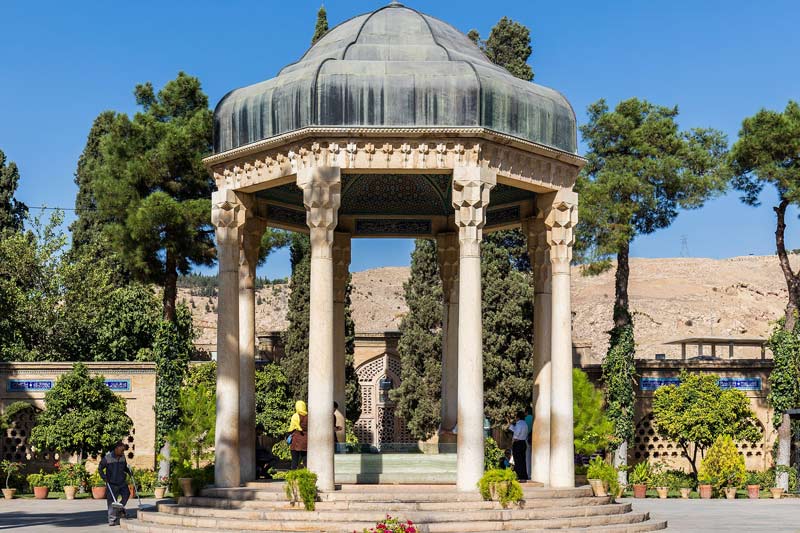
10.Quran Gate
Witness the historic gate where a Quran is said to be kept, and locals touch it for blessings as they pass through.
The Quran Gate, known as Darvazeh-e Quran in Persian, is a historical gateway located at the entrance of Shiraz, Iran. Here are more details about this significant landmark:
Historical Significance: The Quran Gate is an ancient gate that historically marked the entrance to Shiraz. The gate was part of the city’s fortifications and served as a passage into the city. Over time, it became a notable landmark for both locals and travelers.
Architecture and Design: The gate structure, while not elaborate in design, holds a unique feature. There’s a small room on top of the gate that used to house a copy of the Quran. The practice was for travelers to stop, make a brief prayer, and ask for a safe journey before continuing through the gate.
Cultural Beliefs: The site holds cultural significance as travelers passing through the gate would traditionally touch the Quran or make a small donation for blessings and safe travels. Although the original Quran placed there is no longer present, the tradition of seeking blessings remains.
Scenic Views: The site not only carries historical and cultural value but also offers a panoramic view of the city and the surrounding landscape, making it a spot where visitors often pause to take in the vistas.
Visiting Tips: The Quran Gate is open to the public and is a quick stop for those entering or leaving Shiraz. It’s a simple but meaningful site that embodies local traditions and history.
The Quran Gate stands as a symbolic entryway to Shiraz, carrying historical significance and local customs. It serves as a reminder of traditional practices and beliefs, offering travelers and visitors a unique experience and an introduction to the cultural heritage of the city.
11.Tomb of Khaju Kermani
Pay a visit to the tomb of the famous Persian poet Khaju Kermani and admire the intricate design of this historical site.
The Tomb of Khaju Kermani, also known as “Khwaju Kermani,” is a mausoleum dedicated to the renowned Persian poet, Khwaju Kermani, situated in Shiraz, Iran. Here are more details about this historical and cultural landmark:
Khaju Kermani – The Poet: Khwaju Kermani, born in Kerman in the 14th century, was a highly respected and influential Persian poet. His works include lyrical poetry and mystic writings, earning him recognition in Persian literature.
Historical Significance: The tomb serves as a tribute to Khwaju Kermani’s contributions to Persian poetry and literature. It stands as a place of remembrance and reverence for his artistic and intellectual legacy.
Architecture and Design: The mausoleum’s architectural style reflects traditional Persian design elements. The tomb structure is often adorned with intricate tile work, calligraphy, and architectural features typical of historical Persian monuments.
Cultural Attraction: The site is significant for poetry enthusiasts, historians, and visitors interested in Persian literature and heritage. The tomb offers a serene and reflective space where individuals can pay homage to the poet and appreciate his literary works.
Visiting Tips: The tomb is generally open to the public, providing a quiet space for contemplation and honoring the poet’s legacy. Visitors are advised to dress modestly and respectfully as it is a religious and cultural site.
The Tomb of Khaju Kermani is a cultural and historical landmark that honors the memory of the esteemed Persian poet. It stands as a testament to the rich literary heritage of Iran and provides a place for visitors to connect with the country’s poetic tradition.
12.Jahan Nama Garden
Enjoy the serene environment of this garden, perfect for a relaxing stroll amidst nature.
13.Shapouri Pavilion
Admire the architectural beauty of this pavilion, surrounded by a lovely garden, offering a glimpse into the Qajar era.
The Shapouri Pavilion, also known as Shapouri House, is an elegant historical mansion located in Shiraz, Iran. Here are more details about this architectural gem:
Historical Background: The pavilion was built during the early 20th century, specifically in 1935, by a wealthy merchant named Ali Mohammad Shapouri. It was constructed as a private residence for Shapouri’s family and was designed by famous Iranian architect, Abolghasem Mohandes.
Architectural Beauty: Shapouri Pavilion is renowned for its stunning architectural design, representing a blend of Persian and European influences. The mansion features intricate stonework, stained glass windows, colorful tiles, and exquisite mirror work.
Design Elements: The building’s design and layout reflect traditional Persian architectural styles and principles. The interior and exterior boast intricate designs, including ornate carvings, beautiful frescoes, and delicate motifs.
Garden Surroundings: The pavilion is set amidst a picturesque garden, adding to the overall charm of the property. The well-manicured garden complements the elegance of the mansion, offering a serene and delightful atmosphere for visitors.
Cultural Significance: Shapouri Pavilion is not only an architectural masterpiece but also serves as a cultural heritage site. Visitors are drawn to the pavilion to admire the beauty of its design, reflecting the opulence and taste of a bygone era.
Visiting Tips: The pavilion might be open for visitors to explore, offering a chance to appreciate the historical and architectural significance of the site. Visitors should check the opening hours and any entry requirements before planning a visit.
The Shapouri Pavilion is a symbol of architectural brilliance and historical significance, showcasing the fusion of traditional Persian and European architectural styles. It stands as a prominent site in Shiraz, attracting visitors who are interested in exploring the rich cultural heritage of Iran.
14.Chamran Boulevard
Take a walk along this vibrant boulevard, filled with parks, cafes, and modern amenities.
Chamran Boulevard, named after Mostafa Chamran, a prominent figure in Iranian history, is a major thoroughfare and a modern urban development in the city of Shiraz, Iran. Here are some details about this boulevard:
Urban Development: Chamran Boulevard is one of the main roads in Shiraz, known for its significant width, modern infrastructure, and well-planned design. It represents a part of Shiraz’s urban development and infrastructure expansion.
Length and Features: The boulevard is quite extensive, running through various parts of the city. It features multiple lanes for vehicular traffic, green spaces, pedestrian walkways, and recreational areas. Along the boulevard, you can find parks, cafes, restaurants, and various facilities catering to locals and visitors.
Cultural and Recreational Spaces: Chamran Boulevard is lined with parks and green spaces, offering residents and tourists areas for leisure and relaxation. It’s a common place for locals to take walks, exercise, or simply enjoy the outdoors.
Commercial and Residential Zones: As a vital part of the city, the boulevard hosts commercial establishments, shopping centers, residential complexes, and office buildings, contributing to the city’s economic and social life.
Transport and Accessibility: The boulevard is a key transportation route, facilitating easy access to various parts of the city. It’s connected to major streets and provides access to different neighborhoods and attractions in Shiraz.
Chamran Boulevard plays a significant role in the urban fabric of Shiraz, serving not only as a transportation artery but also as a vibrant area for commercial, recreational, and residential activities, contributing to the city’s modern landscape and lifestyle.
15.Shiraz Art House
Immerse yourself in the art and culture of Shiraz by visiting this cultural hub that often hosts exhibitions and events.
These activities offer a diverse range of experiences, from exploring ancient history to enjoying the beauty of gardens, mosques, and shrines, making Shiraz a truly captivating destination.
Conclusion
Shiraz, Iran, is a city rich in cultural heritage, boasting a tapestry of historical landmarks, beautiful gardens, and significant sites. From ancient marvels like Persepolis and the Nasir al-Mulk Mosque to the revered tombs of Hafez and Saadi, Shiraz offers a glimpse into Persian history and artistry. The bustling Vakil Bazaar, the regal Arg of Karim Khan, and the serene Eram and Narenjestan Gardens highlight the city’s diverse offerings.
Chamran Boulevard stands as a modern testament to urban development, providing a vibrant and functional space in the city. While specific information about newer establishments such as Shiraz Art House might be limited, Shiraz remains a city that honors its past while embracing contemporary developments, making it a must-visit destination for cultural enthusiasts, history lovers, and those seeking a blend of tradition and modernity.



